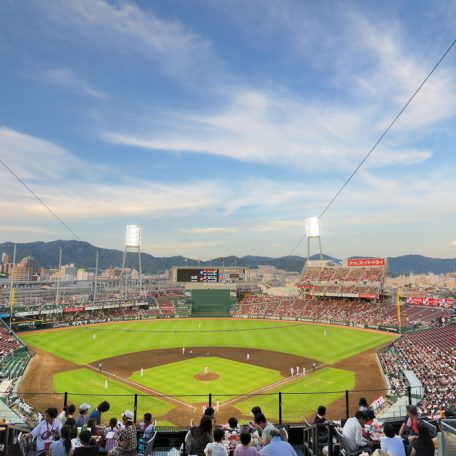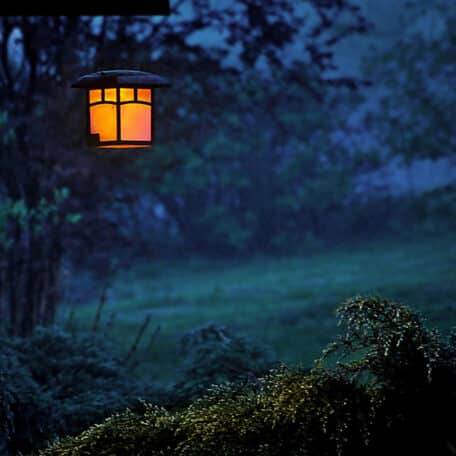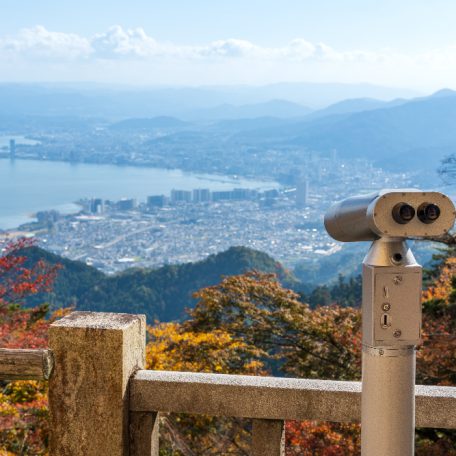KARAOKE GUIDE: SING YOUR HEART OUT!
Aug 16, 2024
BY Chisato Takahashi

Have you ever been to karaoke? Lots of laughter, maybe some out-of-tune singing, and overall, it’s just a really fun time. However, not all karaoke is the same, and I was very surprised by the differences I saw between the ones I experienced in New Zealand and those in Japan.
Karaoke, one of Japan’s proudest traditions, is not just a place to sing for fun but also offers a wide variety of drinks, food, and services. It is a place for stress relief, and also for people who missed the last train, it is more like a haven.
In this blog, I will introduce trivial information about Karaoke and how to enjoy it!

Big Echo, one of the biggest Karaoke chains in Japan – Photo Credit: beeboys
What is Karaoke?
First of all, “Karaoke (カラオケ)” comes from the words “kara (カラ)” and “orchestra (オーケストラ).” In Japanese, “kara” refers to the concept of emptiness. Interestingly, although karaoke became popular around the 1970s, the concept of “Empty orchestra” already existed in 1956.
In 1956, the famous group called Takarazuka Revue in Japan faced a potential cancellation of performance due to a strike by orchestra members. However, they managed to get music tapes and equipment from Matsushita Electric (now Panasonic), allowing the shows to be held successfully. This event was highlighted in the radio and business department’s newspaper by Matsushita Electric, with the catchphrase “kara ni natta oke•box.”
Karaoke’s popularity dramatically gained after that, and it evolved uniquely in different countries. For example, in Korea and other parts of Asia, it’s common to enjoy karaoke in private rooms, similar to Japan. On the other hand, in countries like the United States, singing in front of everyone at a pub is more typical.
Japanese karaoke, especially in private rooms, offers a lot of entertainment with different room sizes and themes, making it available for people who prefer smaller or larger groups.

Karaoke screen- Photo Credit: Chisato
Late 1960
It’s said that the beginning of karaoke was when the bars started setting up a microphone and a cassette tape player so that people could sing.
1970
Then, they started to use 8-track tapes to record songs. It was called “8juke”, allowing people to sing four songs per tape.
1980
The next version was LaserDiscs, which displayed lyrics and visuals on karaoke screens. Also, auto-changers made song selection easier with remote controls. Despite high prices, compact karaoke systems spread to hotels, inns, etc, in Japan.
1990
The development of data communications expanded the storage of songs, making it easier to manage and select them. Additionally, new karaoke styles came up, including internet-based music streaming, Braille karaoke for visually impaired people, etc,..
2000~
Smartphones and VOD made karaoke more accessible than ever. New features and services were added, and now you can enjoy karaoke with just a tablet.
Previously, karaoke was mostly used in bars, with middle-aged men as the main users. However, in 1985, karaoke boxes were introduced, and then women and teenagers started to enjoy it as we do today.

Karaoke machine – Photo Credit: かいわれちゃん
Which karaoke machine is recommended?
DAM
DAM, which holds the top share in the karaoke industry, was created by Daiichi Kosho. (The latest model: LIVE DAM AiR)
DAM offers a wide range of video content, including artists and anime videos. Especially since DAM focuses on anime videos, singing while watching your favorite scene can make you excited for sure.
Moreover, DAM is known for its high-quality sound based on original songs, offering a similar to real live experience.
Interestingly, the latest model, the LIVE DAM Ai series, has advanced AI scoring. This means that it gives more human-like scores, adding excitement to see how your performance is rated!!
Furthermore, with the latest LIVE DAM Ai series, you can now control songs and make reservations by speaking to the microphone. For those who are studying Japanese, give it a try by saying “OK, DAM, YOASOBI のアイドルを入れて”!!! (“OK DAM, YOASOBI no Aidoru wo irete!!!” – Please queue up “Idol” by YOASOBI for the next song!!)

Karaoke – Photo Credit: 紺色らいおん
JOYSOUND
JOYSOUND is the second-largest player in the karaoke industry and was made by XING. (The latest model: JOYSOUND MAX GO)
What’s the cool thing about JOYSOUND is that it offers the largest song selection, so it’s a great choice for those who want to sing minor songs. Additionally, unlike DAM, it delivers better sound without raising the mic volume.
Moreover, it is more than just singing, with features like Uta-Suki, Miru Hako, Session Boxes, etc,..
Uta-Suki (Karaoke social media platform) lets you record and share videos of yourself singing karaoke. You can even post your songs.
Miru Hako provides live concert videos or archived broadcasts in private rooms. For instance, it’s a nice opportunity for people who may have missed out on the concert due to ticket lottery results.
Lastly, in stores with a Session Box, you can connect guitars or basses and play them loudly. Not only your singing but also your guitar playing score will be shown with “Guitar Navi.” It’s a must-go place to enjoy playing instruments while singing, which is hard to do at home in Japan.
*Just please be sure to check if the karaoke shop you are going to has this feature!
I always enjoy singing while watching the latest videos, so I choose DAM.
Have you found your favorite karaoke machine?

Karaoke – Photo Credit: Haru photography
5 Karaoke shops
There are many karaoke shops in Japan.
Here, are five chains I recommend:
Big Echo
Daiichi Kosho operates Big Echo. So, it always provides the latest models of DAM. Additionally, they have pretty good meals, in my opinion. (DAM)
Maneki Neko
It is known as one of the most affordable Karaoke shops. While they have a one-drink ordering rule, you can bring your own food and drinks! (JOYSOUND & DAM)
Karaoke Kan
They offer various types of rooms suitable for everyone to enjoy, including party rooms, kid’s rooms, etc. (JOYSOUND & DAM)
JOYSOUND
Joysound offers the latest models as well. The rooms are clean, big, and also have large monitors. (JOYSOUND)
Karaoke BanBan
They allow you to bring your food to some shops. It is cheap in general, but be mindful that solo karaoke has a slightly higher price. (JOYSOUND & DAM)
Moreover, the price plans of karaoke shops vary from store to store. Karaoke in Tokyo is likely more expensive compared to other prefectures. So I recommend you research in advance before going!

Bringing food and drinks to Karaoke – Photo Credit: Chisato
Karaoke guide
1. Firstly, there are some places where you need to download the app of the karaoke place you are planning to visit and sign up as a member to be able to book a room and also get a discount. You can also create a membership card at the reception desk, but usually not for free.
However, no need to worry since there are some examples of places where you do not need the app and can just show up at the counter to book your Karaoke room:
Big Echo, Karaoke Kan, Karaoke BanBan, and Joysound
Unfortunately, Maneki Neko is for membership only, but becoming a member is highly recommended even when visiting other karaoke places, as most karaoke places offer both regular and membership rates!! If only one person in the group has a membership, that’s also fine.
2. You’ll need to answer questions about the time, karaoke machine, drink options, and whether you’re a member or not. Please DON’T forget to show your student ID if you have one, as there are significant discounts available for students. Karaoke usually charges a fee per 30 minutes, so if you plan to sing for more than three hours, the “Free Time” option would be a suitable choice for you. About drinks, they might offer a one-drink order or all-you-can-drink option, so make sure to ask at the reception desk.
4. Once you’ve received your microphone and other equipment, go to the room with the number on your receipt.
5. If there’s no “Drink Bar machine,” you can use the phone in your room to order from the menu. The drink bar offers only soft drinks, so you have to call the staff to order alcohol and food. Furthermore, some facilities provide unlimited ice cream, various hot drink options, etc, so take advantage if you want to get your money’s worth!!!
*About 10 minutes before your time is up, the reception desk will call you to ask if you’d like to extend your Karaoke period.
In this case, you could say either “30分延長お願いします。” (San Juppunn ennchou onegaishimasu – Please extend for 30 minutes) or “分かりました。ありがとうございます。” (Wakari mashita, Arigato gozaimasu – Understood, Thank you).
6. When you are ready to pay, just bring your receipt to the register.
7. Finally, your first Karaoke experience is DONE!!!

Party night – Photo Credit: rakuichi_rakuza_v3
When going to karaoke for the first time, It is common to feel anxious about which karaoke machine to choose. Do you prefer DAM for its visuals and sound quality? Or do you seek out songs that are not available in DAM by using JOYSOUND?
I hope this blog helped you understand how to do Karaoke!!
In Japan, karaoke is something we must have if you’re a party animal, a loner, or simply missing the last train. With amazing services and rooms available, everyone can enjoy. Since prices and rules change depending on the spots, please be sure to check before you go!
I look forward to the day when everyone can belt out the songs in Japan!
Featured Photo Credit: TAGSTOCK1
After joining us on our Best of Shibuya, Shinjuku Golden Gai, Absolute Osaka, or Umeda Craft Beer & Bar Hopping Tours, be sure to select the Karaoke add-on to enjoy this cultural staple with your friends and family!
Book your pocket wifi now to stay connected through your entire Japan Journey!

Be sure to get the JR Pass to make navigating Japan during your trip that much easier!

YOU MIGHT ALSO LIKE




